The Role of Upcycling in Sustainable Living
In a world where **waste** is becoming an overwhelming issue, the concept of upcycling is emerging as a beacon of hope. Upcycling, the art of transforming discarded materials into something new and valuable, is not just a trend; it's a **movement** towards a more sustainable way of living. Imagine turning an old wooden pallet into a stunning coffee table or converting glass jars into chic storage solutions. These creative endeavors not only reduce waste but also inspire a **sense of resourcefulness** and innovation. In this article, we will explore the importance of upcycling, its environmental benefits, and how it contributes to a circular economy while promoting creativity and resourcefulness in our daily lives.
Upcycling is more than simply recycling; it's about giving new life to items that would otherwise be discarded. The principles of upcycling revolve around **creativity**, **sustainability**, and **resourcefulness**. By taking materials that have reached the end of their intended use and transforming them into higher-quality products, we can significantly reduce landfill waste. This practice encourages individuals and communities to rethink their relationship with waste and view it as a potential resource. In modern society, where consumerism reigns supreme, upcycling serves as a reminder that we can be more mindful of our consumption habits and the impact they have on the environment.
One of the most significant advantages of upcycling is its ability to reduce the demand for new resources. By reusing existing materials, we conserve energy and minimize pollution associated with the production of new goods. This not only helps combat climate change but also promotes environmental conservation. Upcycling plays a crucial role in the larger narrative of sustainability, as it encourages individuals to think critically about their consumption patterns and the lifecycle of products.
Landfills are a major source of environmental pollution, contributing to soil and water contamination. Upcycling diverts materials from these landfills, significantly lessening their impact on the environment. For instance, consider the staggering statistics: according to the Environmental Protection Agency (EPA), over 292 million tons of trash were generated in the U.S. in 2018 alone. By embracing upcycling, we can collectively work towards reducing these numbers and fostering a cleaner planet.
There are countless inspiring examples of creative reuse that can ignite your imagination. From turning old jeans into stylish bags to using wine bottles as garden planters, the possibilities are endless. Here are a few projects that showcase innovative upcycling:
- Furniture Makeovers: Transforming old furniture with a fresh coat of paint or new upholstery can breathe new life into tired pieces.
- Home Decor: Using reclaimed wood to create unique wall art or shelving units adds character to your home.
- Fashion Statements: Designing clothing from thrifted items not only saves money but also promotes sustainable fashion.
Communities around the world are recognizing the importance of upcycling and are launching initiatives to foster collaboration and awareness. Local workshops, upcycling fairs, and community swaps are just a few examples of how neighborhoods can come together to promote sustainable practices. These initiatives not only provide valuable resources for individuals looking to upcycle but also create a sense of **community** and shared purpose.
Beyond its environmental benefits, upcycling can also stimulate local economies. By creating jobs and encouraging entrepreneurship, upcycling businesses contribute to economic growth while promoting sustainability. Small businesses that focus on upcycled products are not only reducing waste but also providing unique, high-quality goods that can attract consumers looking for alternatives to mass-produced items. This shift in consumer behavior is essential for fostering a sustainable economy.
The fashion industry is notorious for its wastefulness, but upcycling offers a viable solution. Upcycled fashion is gaining popularity as consumers become more aware of the environmental impact of fast fashion. Designers are increasingly incorporating upcycled materials into their collections, creating unique pieces that tell a story. This shift not only reduces waste but also challenges the traditional notions of fashion, encouraging consumers to embrace **sustainable clothing practices**.
As upcycled fashion continues to gain traction, several trends are emerging. From patchwork designs that celebrate imperfections to accessories made from discarded materials, the industry is evolving. Designers who are leading this movement are proving that sustainability and style can coexist. The rise of upcycled fashion is not just a trend; it's a **revolution** that encourages consumers to rethink their wardrobes and invest in pieces that are both stylish and environmentally friendly.
Engaging in DIY upcycling projects can be a fun and rewarding experience. Not only do these projects allow you to express your creativity, but they also contribute to a more sustainable lifestyle. Here are some simple project ideas to kickstart your upcycling journey at home:
- Create a vertical garden using old pallets.
- Turn glass jars into decorative candle holders.
- Transform wine corks into coasters or bulletin boards.
Despite its numerous benefits, upcycling faces challenges that hinder its widespread adoption. Limited awareness and market demand can pose significant obstacles. Many people are still unfamiliar with the concept of upcycling, and as a result, they may not see its value. Additionally, access to upcycled products can be limited, making it difficult for consumers to incorporate them into their lives.
Access to upcycled products can be a barrier for many consumers. While some regions have thriving markets for upcycled goods, others may lack the necessary infrastructure. Overcoming these barriers requires collaboration between businesses, local governments, and communities to create accessible platforms for upcycled products.
Raising awareness about upcycling is crucial for its growth. Education plays a vital role in promoting sustainable practices and inspiring individuals to embrace upcycling. Workshops, online resources, and community events can help spread the word about the benefits of upcycling, encouraging more people to participate in this sustainable movement.
As sustainability becomes increasingly vital, upcycling is poised to play a significant role in future practices. The demand for sustainable solutions is growing, and upcycling offers a unique approach to addressing this need. Innovations in technology and design will continue to enhance upcycling processes, making it easier for individuals and businesses to participate.
Emerging technologies are enhancing upcycling processes, enabling more efficient methods of transforming waste materials into valuable products. From advanced recycling techniques to online platforms that connect consumers with upcycled goods, the future of upcycling is bright. These innovations will streamline efforts and improve the quality of upcycled products, making them more appealing to consumers.
Upcycling is part of a larger global movement towards sustainability. As more individuals and organizations recognize the importance of reducing waste and promoting responsible consumption, upcycling will continue to gain momentum. By integrating upcycling into our daily lives, we can contribute to a more sustainable future for generations to come.
What is the difference between recycling and upcycling?
Recycling involves breaking down materials to create new products, while upcycling transforms waste into new products of higher quality or value without breaking them down.
Can upcycling really make a difference in reducing waste?
Absolutely! Upcycling diverts materials from landfills and reduces the demand for new resources, making it a powerful tool in waste reduction.
How can I start upcycling at home?
Begin by looking at items you already own that you no longer use. Get creative and think of ways to repurpose them into something functional or decorative.

Understanding Upcycling
Upcycling is more than just a trendy buzzword; it’s a transformative practice that breathes new life into discarded materials. Imagine taking an old wooden pallet and turning it into a beautiful coffee table, or transforming worn-out jeans into a stylish bag. This process of upcycling involves creatively repurposing items that would otherwise end up in landfills, giving them a new purpose and, often, a higher value. It’s like turning trash into treasure, where the only limit is your imagination!
At its core, upcycling is about sustainability. In a world where consumerism reigns, the need to reduce waste and conserve resources has never been more critical. By upcycling, we not only minimize landfill contributions but also reduce the demand for new raw materials. This shift helps to conserve energy and decreases pollution associated with manufacturing. Upcycling encourages us to think differently about the items we own and how we can extend their lifespan.
So, what exactly does upcycling entail? It’s not just about fixing broken items; it’s about reimagining them. Here are some principles that guide the practice of upcycling:
- Creativity: Upcycling thrives on innovative thinking. It challenges us to see potential where others see waste.
- Resourcefulness: It promotes the idea of using what we already have, rather than always seeking new purchases.
- Quality: The goal is to create something of higher quality or value than the original item.
In modern society, upcycling has gained traction as a response to the environmental crisis. It’s a movement that aligns closely with the principles of the circular economy, where the focus is on keeping materials in use for as long as possible. Instead of the traditional linear model of "take, make, dispose," upcycling encourages a more sustainable approach: "reduce, reuse, recycle." This shift not only benefits the environment but also fosters a culture of creativity and community engagement.
As we explore the world of upcycling, we’ll uncover its environmental benefits, economic impact, and its role in fashion. Upcycling is not just a personal choice; it’s a collective movement that empowers individuals to take action against waste and promote sustainability in their everyday lives. By embracing upcycling, we can all contribute to a healthier planet while showcasing our creativity and resourcefulness.
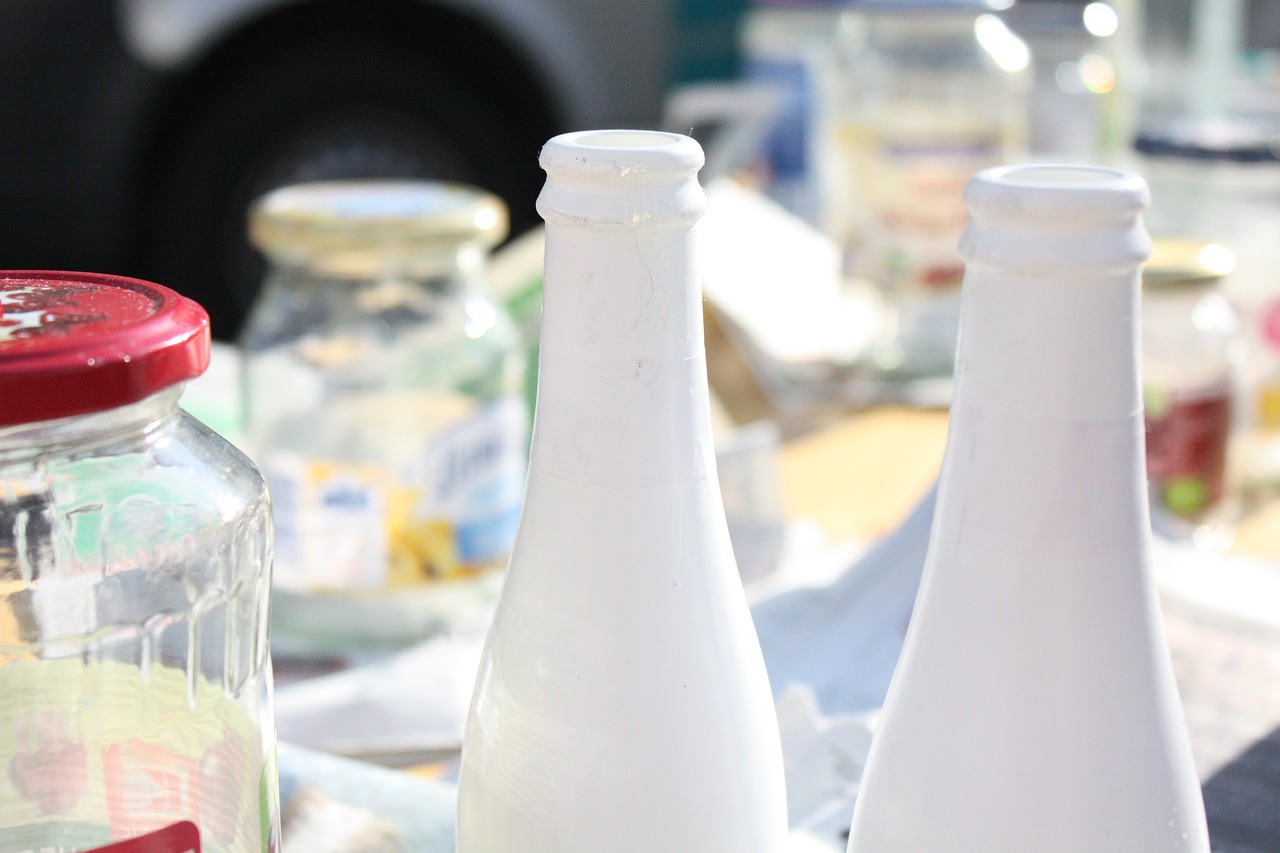
Environmental Benefits of Upcycling
Upcycling is not just a trendy buzzword; it’s a powerful tool in our fight against environmental degradation. By transforming waste into something new and valuable, upcycling significantly reduces the demand for new resources, which in turn conserves energy and minimizes pollution. Imagine a world where every discarded item has the potential to become something beautiful and functional—this is the essence of upcycling. When we engage in upcycling, we are not only giving new life to materials that would otherwise end up in landfills, but we are also making a conscious choice to protect our planet.
One of the most profound benefits of upcycling is its ability to reduce landfill waste. Landfills are overflowing with materials that could be reused or repurposed. According to the Environmental Protection Agency (EPA), the United States generated about 292.4 million tons of trash in 2018, and a significant portion of this waste is recyclable or upcyclable. By diverting these materials from landfills, we can lessen their environmental impact. Every item we upcycle is one less item contributing to the growing mountain of waste. Think about it: if everyone made a small effort to upcycle, we could drastically reduce the amount of waste we produce.
Landfills are a major source of environmental pollution, releasing harmful gases and leachate that can contaminate soil and water. Upcycling diverts materials from these landfills, significantly lessening their impact on the environment. For instance, instead of tossing out old furniture, you could transform it into a stylish piece of home decor. This not only keeps waste out of landfills but also reduces the need for new materials, which often require energy-intensive processes to produce. By thinking creatively about what we throw away, we can make a tangible difference.
To inspire you, here are some innovative upcycling projects that showcase the potential of creative reuse:
- Wine Bottle Vases: Old wine bottles can be transformed into beautiful vases, adding a rustic touch to your decor.
- T-shirt Tote Bags: Instead of discarding worn-out t-shirts, they can be easily converted into functional tote bags.
- Furniture Revamps: Old dressers can be sanded down and painted to create unique storage solutions.
These examples illustrate that upcycling is not just about reducing waste; it’s also about creativity and resourcefulness. Each project tells a story and adds a personal touch to our living spaces.
Moreover, community-led upcycling initiatives are fostering collaboration and awareness. Local programs encourage residents to participate in upcycling workshops and community clean-up events, where they can learn how to transform waste into something useful. These initiatives not only promote sustainable practices but also help build a sense of community. When people come together to share ideas and resources, the impact of upcycling can multiply exponentially. Imagine a neighborhood where everyone is engaged in upcycling—this collective effort can lead to a significant reduction in waste and a stronger community bond.
In conclusion, the environmental benefits of upcycling are immense. By reducing landfill waste, conserving resources, and fostering creativity, upcycling is a crucial component of sustainable living. As we embrace this practice, we not only contribute to a healthier planet but also inspire others to look at waste in a new light. So, the next time you’re about to toss something out, pause for a moment and consider how it could be transformed into something extraordinary.
Q: What is upcycling?
A: Upcycling is the process of transforming waste materials into new products of higher quality or value, thereby reducing waste and promoting sustainability.
Q: How does upcycling benefit the environment?
A: Upcycling reduces the demand for new resources, conserves energy, and minimizes pollution, significantly contributing to environmental conservation.
Q: Can anyone participate in upcycling?
A: Absolutely! Upcycling can be done by anyone, regardless of skill level. Simple projects can be started at home with materials you already have.
Q: Are there community programs for upcycling?
A: Yes, many communities have initiatives that promote upcycling through workshops, events, and local collaborations to raise awareness and encourage sustainable practices.
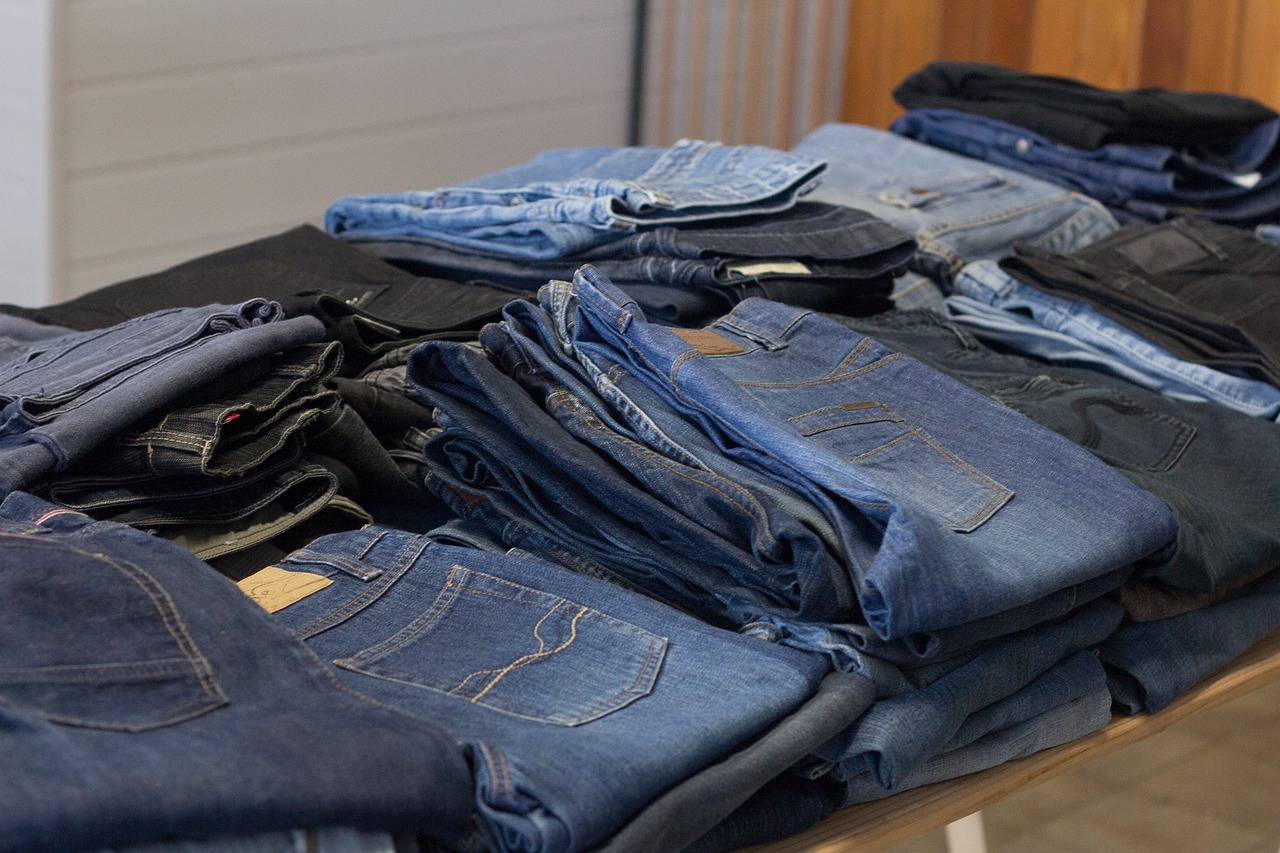
Reducing Landfill Waste
Landfills are often viewed as the final resting place for our discarded items, but in reality, they pose a significant threat to our environment. When we toss something into the trash, it doesn’t just disappear; it contributes to a growing pile of waste that can take decades, if not centuries, to decompose. This is where upcycling steps in as a powerful tool for change. By transforming unwanted materials into new, functional products, we can significantly reduce the amount of waste that ends up in landfills.
Imagine a world where instead of throwing away a broken chair, we could turn it into a trendy bookshelf or a garden planter. This creative reuse not only breathes new life into items that would otherwise be discarded but also encourages a mindset shift towards valuing resources more sustainably. Upcycling allows us to see potential in the things we usually consider trash, fostering a culture of innovation and resourcefulness.
To put things into perspective, consider the following statistics:
| Type of Waste | Percentage Contributing to Landfills |
|---|---|
| Food Waste | 22% |
| Plastic Waste | 12% |
| Textile Waste | 10% |
| Other Materials | 56% |
These numbers highlight a critical issue: a vast majority of our waste could be upcycled instead of discarded. By choosing to upcycle, we are not only reducing landfill waste but also conserving resources and energy that would otherwise be used to produce new items. For instance, upcycling a single piece of furniture can save the energy equivalent of powering a home for a week!
Moreover, the process of upcycling encourages us to think critically about our consumption habits. It challenges us to ask questions like, “Do I really need to buy new?” or “How can I repurpose this item?” This shift in thinking is crucial in combating the throwaway culture that has become so prevalent in our society. When we engage in upcycling, we are making a conscious choice to minimize waste and protect our planet.
In conclusion, reducing landfill waste through upcycling is not just an environmentally friendly practice; it’s a lifestyle choice that promotes creativity and sustainability. By embracing this practice, we can contribute to a healthier planet and inspire others to do the same. So next time you’re about to toss something out, pause and consider: how can I give this item a second life?
- What is upcycling? Upcycling is the process of transforming waste materials into new products of higher quality or value.
- How does upcycling help the environment? It reduces landfill waste, conserves resources, and minimizes pollution.
- Can I upcycle anything? Almost anything can be upcycled! Common items include furniture, clothing, and household goods.
- Where can I find upcycling ideas? There are numerous online resources, DIY blogs, and community workshops that offer inspiration and guidance for upcycling projects.

Creative Reuse Examples
When it comes to upcycling, the possibilities are as limitless as your imagination! Creative reuse is all about taking what might be considered waste and transforming it into something remarkable and functional. For instance, think about those old glass jars that typically end up in the recycling bin. Instead of tossing them away, why not turn them into beautiful candle holders or storage containers? With a little paint and creativity, you can create stunning home decor that not only looks great but also tells a story of sustainability.
Another fantastic example is the use of wooden pallets. These sturdy structures, often discarded after shipping, can be transformed into furniture pieces such as coffee tables, benches, or even vertical gardens. Imagine sitting on a bench crafted from reclaimed wood, knowing that you’ve contributed to reducing waste while enjoying a unique piece of art in your home.
Moreover, clothing upcycling is gaining traction, especially in the fashion world. Old jeans can be cut and sewn into stylish bags, while t-shirts can be transformed into trendy quilts or reusable shopping bags. Not only does this breathe new life into fabric that would otherwise be wasted, but it also allows for a personal touch in your wardrobe. Upcycling your clothing can be an expression of your individuality, showcasing your style while promoting eco-friendliness.
Here are some other creative reuse ideas that can spark your own upcycling journey:
- Turning wine corks into bulletin boards or coasters.
- Using old tires to create unique garden planters.
- Transforming outdated furniture with a fresh coat of paint and new upholstery.
These projects not only reduce waste but also inspire others to think differently about what they consider "trash." By showcasing these creative reuse examples, we can cultivate a culture of innovation and sustainability, encouraging individuals to see the potential in everyday items. So, the next time you’re about to throw something away, pause and ask yourself: How can I give this a new life?
What is upcycling?
Upcycling is the process of transforming waste materials or unwanted products into new materials or products of better quality, often enhancing their value and reducing waste.
How does upcycling benefit the environment?
Upcycling helps reduce landfill waste, conserves natural resources, and minimizes pollution by decreasing the need for new products and the energy consumed in their production.
Can I upcycle anything?
While many materials can be upcycled, the best candidates are items that are still in good condition or can be easily transformed. Common items include glass jars, old furniture, clothing, and even plastic bottles.
Is upcycling expensive?
Upcycling can be a cost-effective way to create new products, especially if you utilize materials you already have at home. It can also be a fun DIY project that saves money compared to buying new items.
How can I start my own upcycling projects?
Begin by looking around your home for items you no longer use. Research simple upcycling projects online, and gather the necessary materials. Start small and let your creativity guide you!
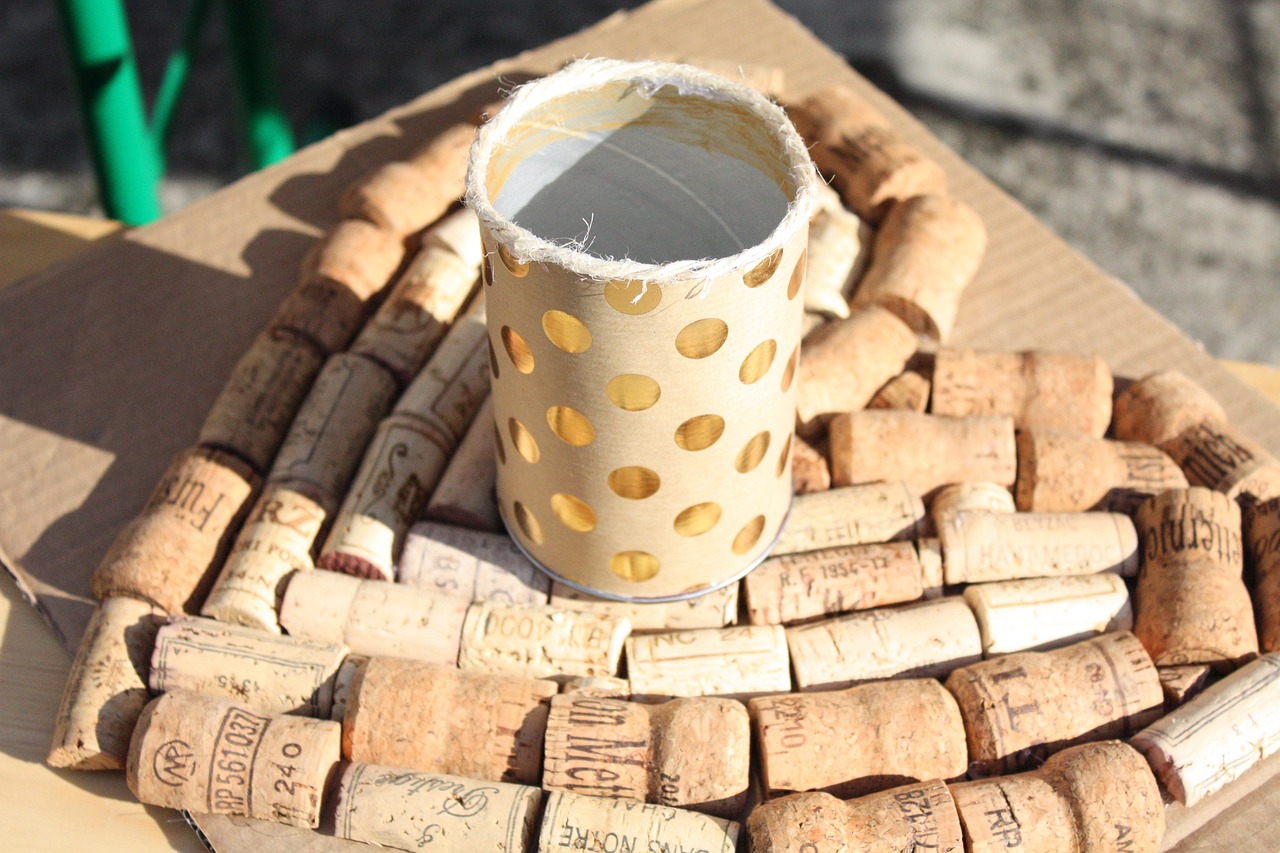
Community Initiatives
Community initiatives play a pivotal role in promoting upcycling and sustainable practices at the grassroots level. These programs not only foster collaboration among residents but also raise awareness about the importance of reusing materials creatively. Imagine a neighborhood where people come together to transform discarded items into beautiful, functional pieces! This sense of community not only strengthens social ties but also contributes to a more sustainable environment.
Many local organizations and non-profits have embarked on exciting upcycling projects that engage community members of all ages. For instance, workshops are often held where participants can learn how to turn old furniture into stylish home decor or how to repurpose glass jars into stunning planters. These hands-on experiences not only empower individuals with new skills but also spark creativity and innovation. The joy of seeing a once-forgotten item transformed into something new is truly inspiring!
Moreover, community initiatives can take various forms, including:
- Upcycling Events: Many communities organize events where residents can bring their unwanted items and swap them for something new. This not only reduces waste but also encourages a culture of sharing and creativity.
- Educational Workshops: Local organizations often host workshops focused on teaching sustainable practices, including upcycling techniques. These sessions can cover everything from sewing old clothes into new outfits to crafting unique home decor from scrap materials.
- Collaborative Projects: Some neighborhoods have initiated collaborative upcycling projects, such as community gardens built from repurposed materials or art installations made from discarded items. These projects not only beautify the area but also serve as a reminder of the potential of waste materials.
In addition, social media has become a powerful tool for spreading awareness about these initiatives. Many communities have created online platforms where residents can share their upcycling successes, exchange ideas, and inspire one another. This virtual space fosters a sense of belonging and motivates individuals to engage in sustainable practices.
Overall, community initiatives are essential for driving the upcycling movement forward. They not only provide practical solutions to waste management but also create a sense of pride and ownership among residents. By coming together to embrace upcycling, communities can make a significant impact on their local environment while promoting creativity and resourcefulness.
Q1: What is upcycling?
Upcycling is the process of transforming waste materials or unwanted products into new items of higher quality or value. This practice helps reduce waste and promotes sustainability.
Q2: How can I get involved in community upcycling initiatives?
You can start by researching local organizations or groups that focus on sustainability and upcycling. Many communities host workshops, events, and collaborative projects that welcome participation from residents.
Q3: What are some easy upcycling projects I can do at home?
Simple projects include turning glass jars into candle holders, repurposing old t-shirts into tote bags, or using wooden pallets to create outdoor furniture. The possibilities are endless!
Q4: Why is upcycling important for the environment?
Upcycling reduces the demand for new resources, conserves energy, and minimizes pollution. By giving new life to discarded items, we can significantly decrease landfill waste and combat climate change.
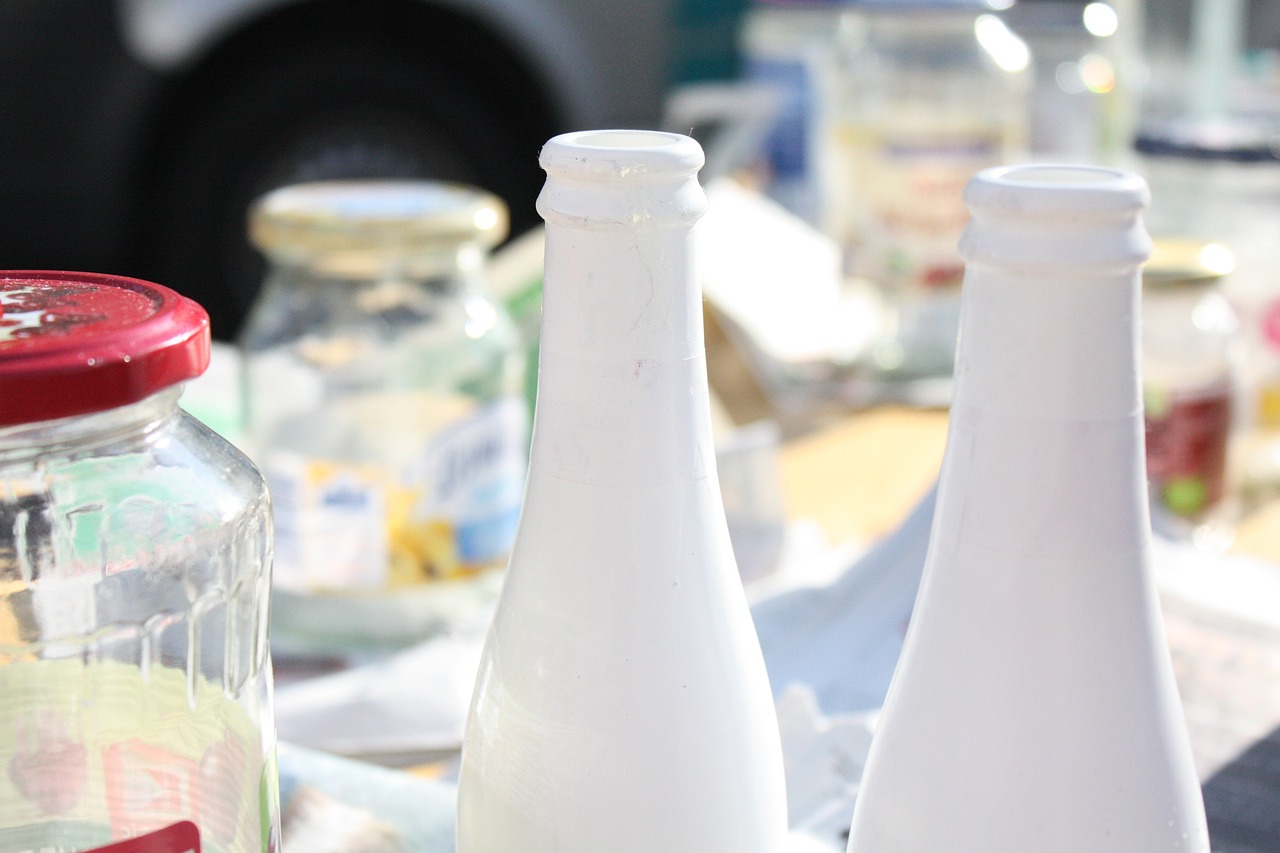
Economic Impact of Upcycling
Upcycling isn't just a buzzword; it's a transformative force in our economy. By redefining waste materials into valuable products, upcycling stimulates local economies, creates jobs, and encourages entrepreneurship. Imagine walking into a local market and finding a beautifully crafted lamp made from recycled glass bottles or a chic bag fashioned from old denim. These aren't just products; they are stories of creativity and sustainability that contribute to economic vitality.
The economic impact of upcycling can be broken down into several key areas:
- Job Creation: Upcycling initiatives often require a workforce, leading to job creation in various sectors, from design to production and retail. Local artisans and craftspeople can find new opportunities in the upcycling movement, allowing them to showcase their talents while earning a living.
- Entrepreneurial Opportunities: With the rise of eco-conscious consumers, there is a growing demand for upcycled products. This demand opens doors for entrepreneurs to start businesses focused on sustainable practices. Small businesses that specialize in upcycled goods not only thrive but also contribute to the local economy.
- Cost Savings: Upcycling often involves using materials that would otherwise be discarded, which can significantly reduce production costs. This means that businesses can offer unique products at competitive prices, making them more appealing to budget-conscious consumers.
Moreover, upcycling can lead to a shift in consumer behavior. As more people become aware of the environmental and economic benefits of upcycled products, they may choose to support local businesses over mass-produced alternatives. This shift can create a ripple effect, encouraging more entrepreneurs to explore sustainable practices, thereby enriching the community.
To illustrate the economic impact of upcycling, consider the following table that outlines the potential benefits:
| Benefit | Description |
|---|---|
| Job Creation | New jobs in design, production, and retail sectors. |
| Entrepreneurship | Opportunities for startups focusing on sustainable products. |
| Cost Efficiency | Reduced production costs through the use of reclaimed materials. |
| Consumer Awareness | Increased demand for sustainable and locally-made products. |
In conclusion, the economic impact of upcycling is profound and multifaceted. By fostering job creation, encouraging entrepreneurship, and shifting consumer behavior, upcycling not only contributes to a more sustainable future but also strengthens local economies. As we continue to embrace upcycling practices, we can look forward to a more resilient economy that values creativity and sustainability.
1. What is upcycling?
Upcycling is the process of transforming waste materials into new products of higher quality or value, often with a creative twist.
2. How does upcycling benefit the economy?
Upcycling stimulates local economies by creating jobs, encouraging entrepreneurial ventures, and promoting sustainable consumer habits.
3. Can anyone participate in upcycling?
Absolutely! Upcycling can be done by anyone, from individuals at home to businesses looking to innovate and reduce waste.
4. What are some examples of upcycled products?
Examples include furniture made from reclaimed wood, bags made from old clothing, and home decor items crafted from discarded materials.
5. How can I get started with upcycling?
Start by looking around your home for items you no longer use, then brainstorm ways to repurpose them into something functional or decorative.
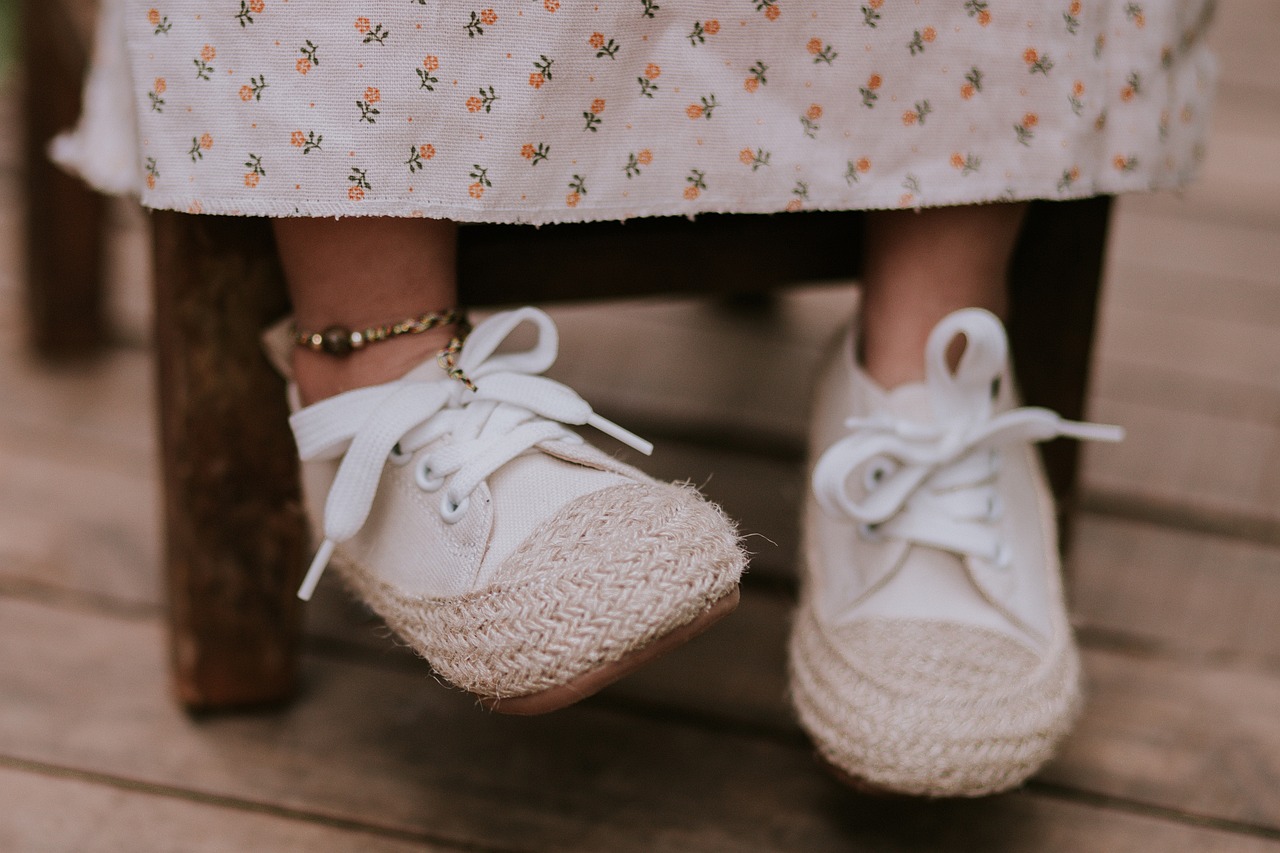
Upcycling in Fashion
In recent years, the fashion industry has come under fire for its environmental impact, and rightly so. The sheer volume of waste generated by fast fashion is staggering. However, upcycling is emerging as a beacon of hope, offering a sustainable alternative that not only reduces waste but also promotes creativity and individuality. Upcycling transforms discarded clothing and materials into unique, stylish pieces, breathing new life into what would otherwise be thrown away. This practice not only helps to combat the negative effects of fashion waste but also encourages consumers to think critically about their purchasing habits.
Upcycled fashion is not just a trend; it's a movement that is gaining momentum across the globe. Designers and brands are increasingly embracing this concept, recognizing the potential to create stunning, one-of-a-kind garments while minimizing their ecological footprint. For instance, many designers are now using fabric scraps, vintage clothing, and even materials like plastic bottles to craft new pieces. This innovative approach not only reduces the need for new resources but also showcases the beauty of sustainability.
One of the most exciting aspects of upcycled fashion is the creativity it fosters. It allows designers and consumers alike to explore their artistic sides. Imagine turning an old pair of jeans into a stylish bag or transforming a vintage dress into a chic top. The possibilities are endless, and the results can be truly breathtaking. As more people become aware of the benefits of upcycling, a vibrant community of DIY enthusiasts and fashion-forward thinkers is emerging, eager to share their creations and inspire others.
Moreover, the rise of upcycled fashion is creating a shift in consumer behavior. People are beginning to appreciate the value of unique pieces that tell a story rather than just opting for mass-produced items. This change in mindset not only supports sustainable practices but also promotes local artisans and small businesses. By choosing upcycled fashion, consumers are making a conscious choice to support a more sustainable industry, contributing to a healthier planet.
However, it’s essential to recognize that upcycling in fashion is not without its challenges. The market for upcycled goods can be limited, and there is often a perception that these items are less desirable than new products. To combat this, brands are focusing on quality and design, proving that upcycled fashion can be just as chic and fashionable as new items. As awareness grows, so too will the demand for these sustainable alternatives.
In summary, upcycling in fashion is a powerful tool in the fight against waste and environmental degradation. By embracing this practice, we not only reduce our ecological footprint but also encourage creativity and individuality in our wardrobes. As we look to the future, it’s clear that upcycled fashion is not just a passing fad; it’s a vital part of a more sustainable world.
- What is upcycling in fashion? Upcycling in fashion refers to the process of repurposing discarded clothing and materials into new, high-quality garments, reducing waste and promoting sustainability.
- Why is upcycled fashion important? It helps combat the environmental impact of fast fashion, reduces landfill waste, and encourages creative expression.
- How can I start upcycling my clothes? You can start by experimenting with simple DIY projects, such as turning old jeans into bags or revamping outdated dresses into trendy tops.
- Are upcycled clothes expensive? Prices can vary, but many upcycled items are competitively priced, especially when you consider their unique nature and the sustainable practices behind them.

Trends in Upcycled Fashion
In recent years, the fashion industry has witnessed a remarkable shift towards sustainability, and at the forefront of this movement is upcycled fashion. This innovative approach not only reduces waste but also promotes creativity and individuality in clothing design. So, what exactly is driving this trend? Let's dive into some of the most exciting developments in the world of upcycled fashion.
One of the most significant trends is the rise of designer collaborations. Many established fashion houses are teaming up with up-and-coming designers or local artisans to create unique pieces that tell a story. These collaborations often focus on using surplus fabrics, vintage garments, or even discarded materials to craft stunning new items. For instance, a high-end designer might partner with a local artist to transform old denim into a chic jacket, blending artistic vision with sustainability.
Another trend gaining traction is the emergence of upcycled accessories. From handbags made out of repurposed leather to jewelry crafted from broken pieces, accessories are becoming a canvas for creativity. Brands are increasingly showcasing how they can take what would otherwise be waste and turn it into something beautiful and functional. This not only appeals to eco-conscious consumers but also adds a unique touch to personal style.
Furthermore, the concept of slow fashion is gaining momentum. Unlike the fast fashion model that promotes mass production and quick turnover, slow fashion emphasizes quality, craftsmanship, and timelessness. Upcycled fashion aligns perfectly with this philosophy, as it encourages consumers to invest in pieces that are not only stylish but also sustainable. By choosing upcycled items, shoppers are making a conscious decision to support a more ethical and environmentally friendly fashion industry.
Social media platforms, especially Instagram and TikTok, have also played a pivotal role in popularizing upcycled fashion. Influencers and fashion enthusiasts are sharing their DIY upcycling projects, showcasing how they can transform old clothes into trendy outfits. This has sparked a wave of interest, inspiring more people to get involved in upcycling. The hashtag #UpcycledFashion has gained thousands of followers, creating a community that celebrates creativity and sustainability.
Moreover, vintage and thrift shopping has seen a resurgence as people look for unique pieces that can be upcycled. Thrift stores and online marketplaces are filled with potential treasures waiting to be transformed. Shoppers are increasingly viewing second-hand items not just as cheap alternatives but as opportunities for creative expression. This trend not only supports sustainable practices but also encourages a shift in mindset towards valuing the stories behind each piece of clothing.
As we look to the future, the trends in upcycled fashion are set to evolve further. With a growing emphasis on sustainability, we can expect to see more innovative techniques and materials being used in upcycled designs. The fashion industry is gradually recognizing that sustainability is not just a passing trend but a fundamental shift towards a more responsible and conscious way of creating and consuming fashion.
- What is upcycled fashion?
Upcycled fashion refers to the process of taking old or discarded materials and transforming them into new clothing or accessories of higher quality or value. - Why is upcycled fashion important?
It helps reduce waste, conserves resources, and promotes sustainability within the fashion industry, making it a more responsible choice for consumers. - How can I get started with upcycling?
You can start by looking through your wardrobe for items you no longer wear and brainstorming ways to repurpose them, or by visiting thrift stores for materials to work with. - Are there any brands that focus on upcycled fashion?
Yes, many brands are dedicated to upcycled fashion, creating unique pieces from surplus materials. Some well-known brands include Reformation, Patagonia, and Eileen Fisher.

DIY Upcycling Projects
Are you ready to unleash your creativity and make a positive impact on the environment? are not just a fun way to spend your weekend; they also allow you to transform everyday waste into something beautiful and functional. Imagine turning old glass jars into chic storage solutions or repurposing worn-out furniture into stunning statement pieces for your home. The possibilities are endless, and the satisfaction of creating something unique from what would otherwise end up in a landfill is incredibly rewarding.
One of the best things about DIY upcycling is that it encourages you to think outside the box. You don’t need to be a master craftsman or have a fancy workshop to get started. All you need is a bit of imagination, some basic tools, and a willingness to experiment. To help you kick off your upcycling journey, here are a few simple project ideas that require minimal investment but can yield impressive results:
- Wine Bottle Planters: Cut the bottom off a wine bottle, fill it with soil, and plant your favorite herbs. Hang them on your balcony for a stylish garden.
- T-Shirt Tote Bags: Transform old t-shirts into reusable tote bags. Just cut off the sleeves and neckline, tie the bottom, and you’re good to go!
- Old Furniture Makeover: Give new life to an old chair or table with a fresh coat of paint, new upholstery, or simply by adding some decorative elements.
These projects not only allow you to express your creativity but also promote a sustainable lifestyle. By using materials you already have, you reduce the need for new resources, which is a key principle of sustainable living. Plus, when you share your creations with friends or on social media, you inspire others to join the upcycling movement!
If you're looking for more complex projects, consider organizing a community upcycling workshop. Gather friends, family, or neighbors, and share ideas and materials. Not only does this foster a sense of community, but it also raises awareness about the importance of reducing waste. You might even discover hidden talents among your friends that could lead to future collaborations.
In conclusion, DIY upcycling projects are a fantastic way to combine creativity with sustainability. Whether you start small or dive into larger projects, the key is to enjoy the process and embrace the imperfections of your creations. Remember, every item you upcycle is a step towards a more sustainable future!
Q: What is upcycling?
A: Upcycling is the process of transforming waste materials or unwanted products into new items of higher quality or value, thereby reducing waste and promoting sustainability.
Q: Do I need special skills to start upcycling?
A: Not at all! Most DIY upcycling projects are designed to be simple and accessible for everyone, regardless of skill level. Just have fun and be creative!
Q: Where can I find materials for upcycling projects?
A: You can find materials around your home, at thrift stores, or even from friends and family. Look for items that you no longer use or need.
Q: How can I promote my upcycled creations?
A: Share your projects on social media, join local craft fairs, or start an online shop. Engaging with your community can help spread the word about your upcycling efforts!

Challenges of Upcycling
While upcycling is a fantastic way to promote sustainability and creativity, it certainly isn't without its challenges. One of the most significant hurdles is the limited awareness surrounding the concept. Many people still associate recycling with simply discarding items, rather than seeing the potential in transforming them into something new and valuable. This lack of understanding can prevent individuals from embracing upcycling in their daily lives.
Moreover, the market for upcycled products is often underdeveloped. Many consumers are unaware of the availability of these goods, leading to a limited demand. This creates a cycle where producers are hesitant to invest time and resources into creating upcycled products, fearing they won't find a market. Additionally, the perception of quality can be a barrier. Some consumers might view upcycled items as inferior or less desirable compared to brand-new products, which can deter purchases.
Another challenge is the accessibility of materials for upcycling. Not everyone has the same access to resources like discarded furniture, fabric, or other materials that can be transformed. This can lead to disparities in who can participate in upcycling practices. For instance, individuals living in urban areas might have more access to discarded items compared to those in rural settings.
Furthermore, education plays a crucial role in the upcycling movement. Many people simply don’t know how to get started or what projects they can undertake. This is where community initiatives can make a significant difference. By providing workshops, resources, and guidance, communities can help individuals learn the skills necessary to upcycle effectively. However, without widespread educational efforts, many may remain unaware of how to engage in upcycling.
Despite these challenges, the potential for upcycling to make a positive impact on the environment and society is immense. By addressing these obstacles, we can pave the way for a more sustainable future. It's essential to cultivate a culture of creativity and resourcefulness, encouraging everyone to see the value in what might otherwise be considered waste.
- What is upcycling? Upcycling is the process of transforming waste materials into new products of higher quality or value, thereby reducing landfill waste and promoting sustainability.
- How does upcycling benefit the environment? Upcycling helps reduce the demand for new resources, conserves energy, and minimizes pollution, contributing to environmental conservation and combating climate change.
- Can anyone participate in upcycling? Yes! Upcycling can be done by anyone, regardless of skill level. There are many resources and community initiatives available to help individuals get started.
- What are some common materials used in upcycling? Common materials include old furniture, clothing, plastic bottles, and any items that can be creatively transformed into something new and functional.
- How can I learn more about upcycling? There are numerous resources available online, as well as local workshops and community programs that focus on upcycling and sustainable practices.
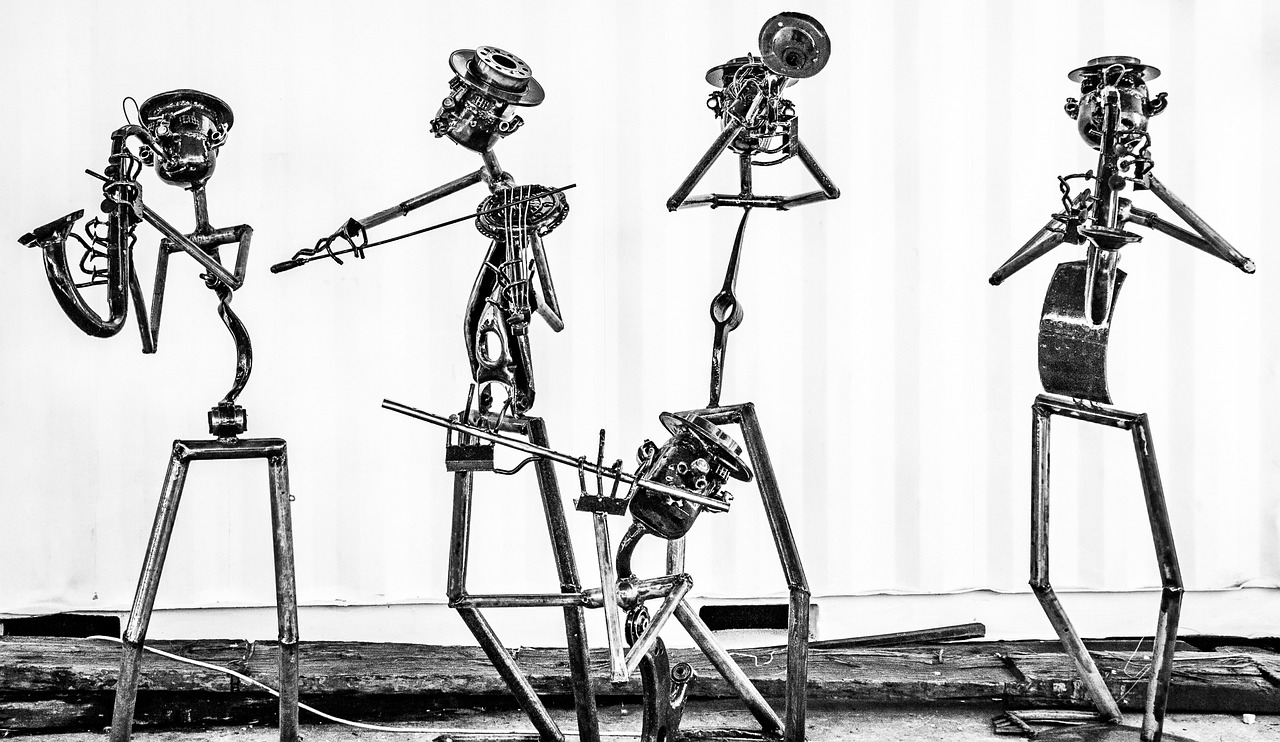
Market Accessibility
When we talk about upcycling, one of the crucial hurdles we face is . Imagine a world where creative minds transform discarded materials into stunning products, but the very audience that would appreciate these treasures can't find them easily. This disconnect can be frustrating, not just for the creators but also for consumers who want to make sustainable choices. The reality is that upcycled products often struggle to find their way into mainstream markets due to several factors.
One of the primary challenges is the limited distribution channels. Many upcyclers operate small-scale businesses, often relying on local markets or online platforms that may not have the reach of larger retailers. This can make it difficult for consumers to discover these unique products. Furthermore, the lack of visibility in retail spaces often means that upcycled goods are overshadowed by mass-produced alternatives, which are easier to find and often marketed more aggressively.
Additionally, there is a significant perception barrier associated with upcycled products. Some consumers may associate these items with lower quality or may not fully understand the value of purchasing something that has been creatively repurposed. Overcoming this perception requires not just effective marketing strategies, but also education. Informing consumers about the benefits of upcycling, such as its positive impact on the environment and the uniqueness of each piece, can help shift perspectives.
To tackle these challenges, it is essential to foster collaboration between upcyclers and established retailers. By creating partnerships, we can enhance the visibility of upcycled products and allow consumers to make more informed choices. Additionally, local governments and organizations can play a significant role by providing support and resources to help upcycling businesses thrive. This can include funding, workshops, and networking opportunities that connect upcyclers with potential customers.
In conclusion, while market accessibility remains a challenge for upcycling, there are numerous ways to bridge the gap. By raising awareness and promoting collaboration, we can create a thriving ecosystem for upcycled products, allowing creativity and sustainability to flourish. After all, every upcycled item tells a story—one that deserves to be heard and celebrated.
- What is upcycling? Upcycling is the process of transforming waste materials or unwanted products into new items of better quality or value.
- How does upcycling benefit the environment? Upcycling reduces landfill waste, conserves resources, and minimizes pollution by reusing materials instead of producing new ones.
- Can I start my own upcycling project at home? Absolutely! Many DIY projects can be done at home using everyday items like old furniture, clothes, or glass jars.
- Where can I find upcycled products? Upcycled products can often be found at local markets, specialty stores, and online platforms dedicated to sustainable goods.
- What challenges do upcyclers face? Upcyclers often struggle with limited market access, consumer perceptions, and the need for better distribution channels.
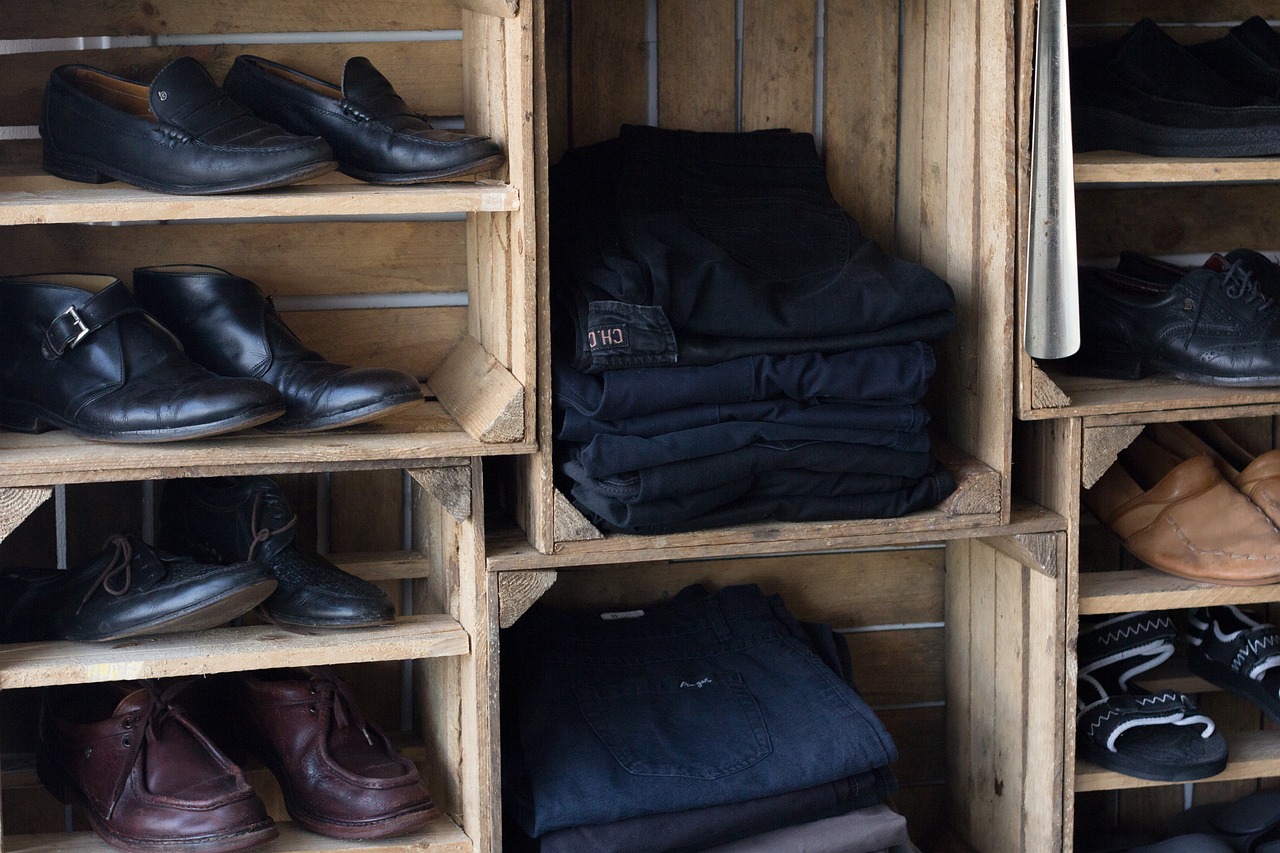
Education and Awareness
Education and awareness are the cornerstones of promoting upcycling as a sustainable practice. Without a solid understanding of what upcycling entails and its myriad benefits, individuals may overlook the potential that lies in transforming waste into valuable resources. Imagine walking past a pile of discarded materials and not recognizing the treasure hidden within. This is where education comes in, illuminating the path to creativity and resourcefulness.
To foster a culture of upcycling, it is essential to incorporate educational programs into schools and communities. These programs can take various forms, including workshops, seminars, and hands-on projects that engage participants directly. For example, a community workshop could teach participants how to turn old jeans into stylish tote bags, showcasing the practical applications of upcycling. By participating in such activities, individuals not only learn valuable skills but also gain a deeper appreciation for sustainability.
Moreover, awareness campaigns can play a significant role in changing perceptions about waste. Social media platforms, local events, and community outreach can be powerful tools to spread the word about upcycling. Sharing success stories, innovative projects, and practical tips can inspire others to think creatively about their waste. Here are a few key points that education and awareness initiatives should focus on:
- Understanding Upcycling: Clarifying the difference between recycling and upcycling, emphasizing that upcycling adds value to materials.
- Environmental Impact: Highlighting how upcycling reduces landfill waste, conserves resources, and lowers carbon footprints.
- Economic Benefits: Demonstrating how upcycling can create jobs and stimulate local economies through small businesses.
- DIY Potential: Encouraging individuals to engage in DIY projects, showcasing how easy and fun it can be to upcycle at home.
Incorporating upcycling into educational curricula can also make a significant difference. Schools can introduce projects that require students to think critically about waste and resource management. For instance, art classes could focus on creating masterpieces from recycled materials, igniting students' creativity while instilling a sense of responsibility towards the environment. By nurturing this mindset from a young age, we can cultivate a generation that values sustainability and embraces upcycling as a way of life.
In conclusion, the role of education and awareness in promoting upcycling cannot be overstated. By empowering individuals with knowledge and encouraging them to explore their creativity, we can transform the way society views waste. Upcycling is not just a trend; it's a movement that, with the right education and awareness, can lead to a more sustainable and resourceful future.
| Question | Answer |
|---|---|
| What is upcycling? | Upcycling is the process of transforming waste materials into new products of higher quality or value. |
| How does upcycling benefit the environment? | Upcycling reduces landfill waste, conserves energy, and minimizes pollution by prolonging the life cycle of materials. |
| Can I start upcycling at home? | Absolutely! There are countless DIY projects you can try, such as turning glass jars into storage containers or old furniture into new decor. |
| Is upcycling cost-effective? | Yes, upcycling can save money by repurposing items you already own instead of buying new products. |
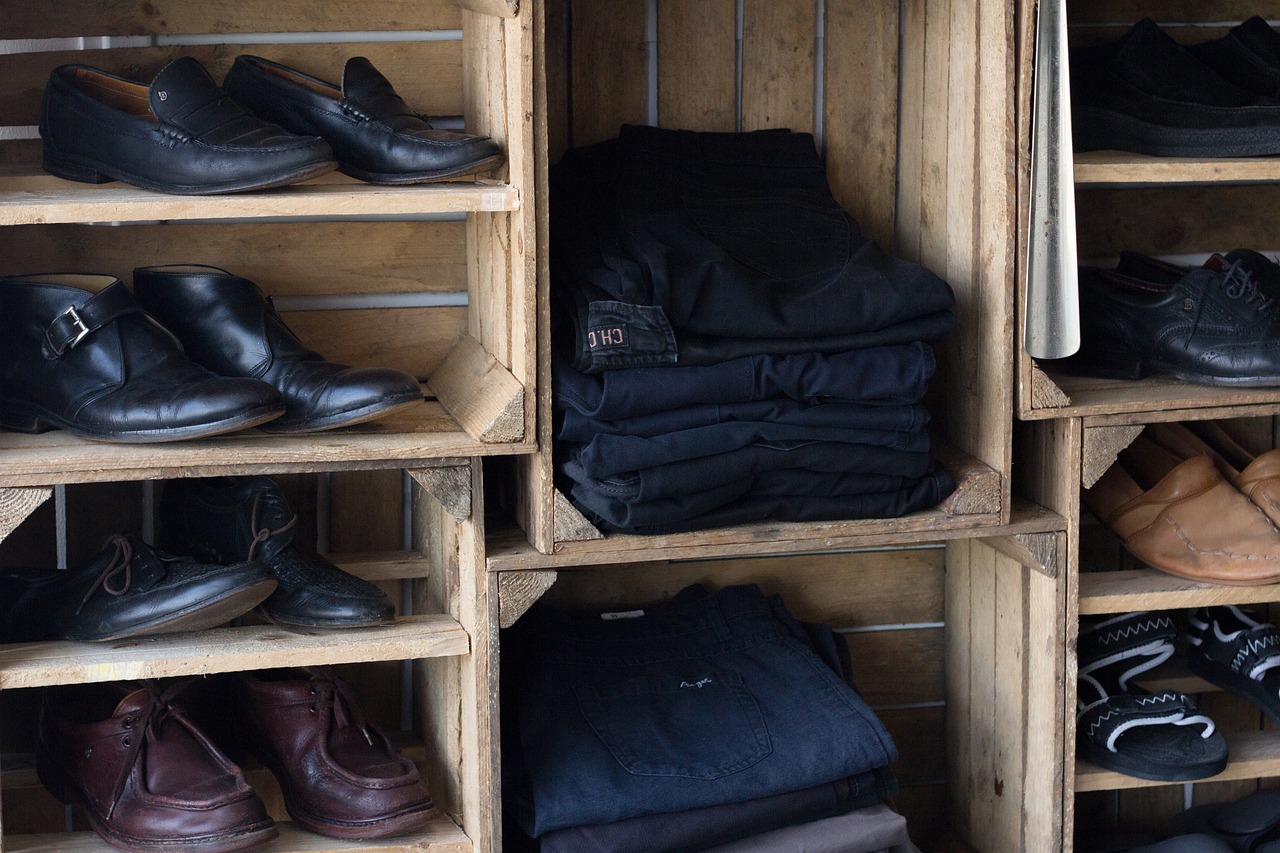
The Future of Upcycling
As we step into an era where sustainability is no longer just a buzzword but a necessity, the role of upcycling is becoming increasingly vital. The future of upcycling is bright, with a multitude of trends and innovations on the horizon that promise to revolutionize how we perceive waste and resourcefulness. Imagine a world where discarded materials are not seen as trash but as treasures waiting to be transformed into something extraordinary. This shift in mindset is essential for fostering a culture of sustainability.
One of the most exciting aspects of the future of upcycling is the integration of technological innovations. Emerging technologies are enhancing the upcycling process, making it easier and more efficient than ever before. For instance, advancements in 3D printing and digital fabrication are allowing creators to transform waste into high-quality products with precision and creativity. This not only improves the quality of upcycled goods but also makes the process more accessible to a wider audience. Imagine being able to design and print your own furniture from recycled materials right at home!
Moreover, the global movement towards sustainability is gaining momentum, with more individuals and organizations recognizing the importance of upcycling in combating environmental challenges. Governments, businesses, and communities are increasingly collaborating to promote sustainable practices, including upcycling. This collaborative effort is crucial, as it fosters awareness and encourages individuals to embrace upcycling in their daily lives. As more people become educated about the benefits of upcycling, we can expect to see a surge in demand for upcycled products, further driving innovation and creativity.
In addition to technological advancements and community initiatives, the future of upcycling is also intertwined with the concept of a circular economy. A circular economy is one that emphasizes the continuous use of resources, minimizing waste and promoting sustainability. Upcycling plays a significant role in this model by ensuring that materials are kept in circulation for as long as possible. By reducing the need for new raw materials, upcycling not only conserves resources but also decreases pollution and energy consumption.
To illustrate the potential impact of upcycling in a circular economy, consider the following table that outlines the benefits of integrating upcycling into our economic systems:
| Benefit | Description |
|---|---|
| Resource Conservation | Reduces the need for new raw materials, preserving natural resources. |
| Energy Efficiency | Minimizes energy consumption associated with manufacturing new products. |
| Pollution Reduction | Lessens environmental pollution by diverting waste from landfills. |
| Economic Growth | Stimulates local economies through the creation of upcycling businesses. |
As we look to the future, it's clear that upcycling is not just a trend—it's a movement that is reshaping our relationship with materials and waste. The potential for creativity and innovation is limitless, and every individual has the power to contribute to this change. So, whether you're a seasoned upcycler or just starting your journey, remember that every small effort counts. The future is in our hands, and by embracing upcycling, we can pave the way for a more sustainable and resourceful world.
- What is upcycling? Upcycling is the process of transforming waste materials into new products of higher quality or value, thereby reducing waste and promoting sustainability.
- How does upcycling benefit the environment? Upcycling helps reduce landfill waste, conserves energy, and minimizes pollution, contributing to environmental conservation and climate change mitigation.
- Can upcycling be profitable? Yes! Upcycling can stimulate local economies by creating jobs and encouraging entrepreneurship, making it a viable business model.
- What are some examples of upcycling in fashion? Upcycled fashion includes clothing made from repurposed materials, such as turning old jeans into bags or using fabric scraps to create new garments.
- How can I start upcycling at home? You can start by identifying items you no longer use and thinking creatively about how to repurpose them into something functional or decorative.
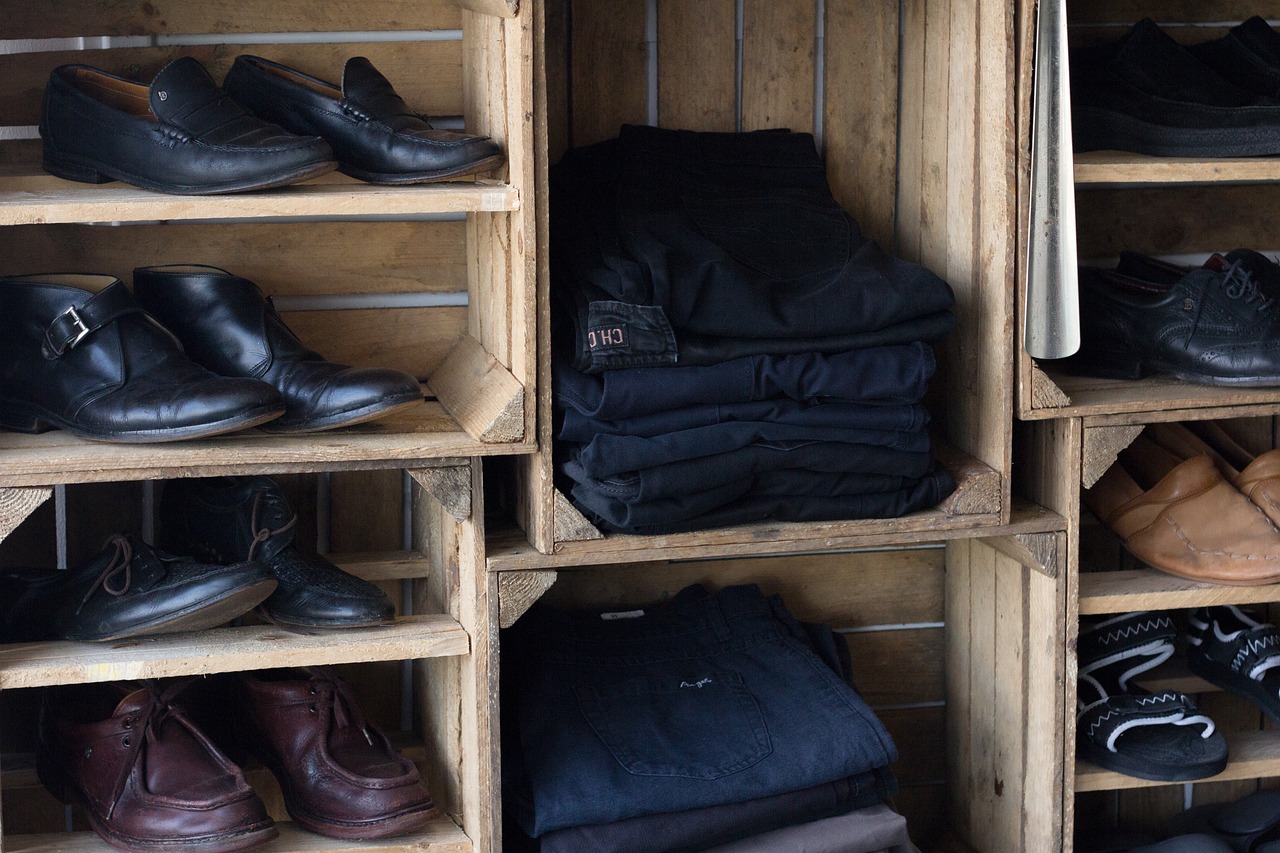
Technological Innovations
In today's rapidly evolving world, are revolutionizing the way we approach upcycling. With new tools and methods at our disposal, we can transform waste materials into valuable products more efficiently than ever before. For instance, 3D printing technology has emerged as a game-changer, allowing creators to design and produce items directly from recycled plastics. Imagine taking a discarded bottle and turning it into a stylish lamp or a piece of furniture! This not only reduces waste but also opens up a realm of creative possibilities.
Moreover, advancements in artificial intelligence (AI) are enhancing the upcycling process by helping businesses and individuals identify valuable waste materials. AI algorithms can analyze the composition of materials, suggesting the best ways to repurpose them. This means that what once seemed like trash can be transformed into treasure, all thanks to cutting-edge technology. Additionally, mobile apps are being developed to connect upcyclers with local resources and markets, facilitating the exchange of materials and finished products.
As we look to the future, it's essential to recognize how these innovations can streamline the upcycling process. For example, automated sorting systems can efficiently separate recyclable materials, ensuring that only the best quality items are used for upcycling. This not only increases the efficiency of the recycling process but also enhances the quality of the final products. With these technological advancements, the upcycling movement is gaining momentum, making sustainable living more accessible and appealing to the masses.
In summary, as technology continues to advance, the potential for upcycling expands. From 3D printing and AI to mobile applications and automated sorting systems, the tools available to us are more powerful than ever. These innovations not only simplify the upcycling process but also spark creativity, allowing individuals to reimagine waste in ways that were previously unimaginable. Embracing these technologies is crucial for fostering a culture of sustainability and resourcefulness in our communities.
- What is upcycling? Upcycling is the process of transforming waste materials into new products of higher quality or value.
- How does technology aid in upcycling? Technologies like 3D printing and AI help identify and repurpose materials more efficiently, enhancing creativity and reducing waste.
- Can upcycling help the environment? Yes, upcycling reduces landfill waste, conserves resources, and minimizes pollution, contributing to a healthier planet.
- Are there any challenges to upcycling? Yes, challenges include limited market accessibility and the need for greater awareness and education about upcycling practices.
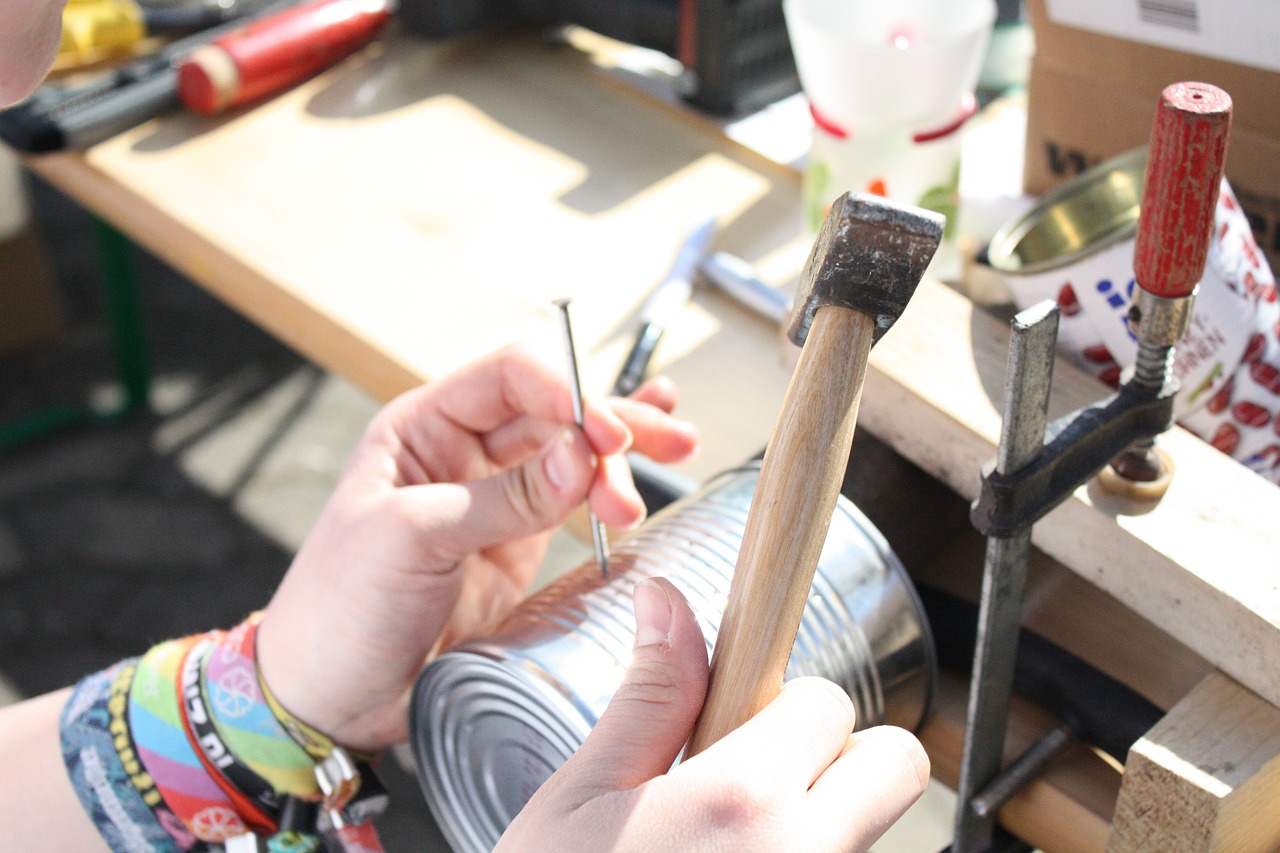
Global Movement Towards Sustainability
The is gaining momentum, and upcycling is at the forefront of this transformation. As we face pressing environmental challenges such as climate change, pollution, and resource depletion, individuals, communities, and organizations are increasingly recognizing the importance of adopting sustainable practices. Upcycling, which creatively repurposes waste materials into new products, embodies this ethos by encouraging resourcefulness and reducing the strain on our planet's resources.
At its core, the upcycling movement is part of a larger circular economy framework that seeks to minimize waste and promote the continuous use of materials. In a circular economy, products are designed with their entire lifecycle in mind, meaning they can be reused, repaired, and recycled rather than discarded. This approach not only conserves resources but also fosters innovation and creativity. As more people embrace upcycling, they contribute to a culture that values sustainability and environmental stewardship.
Moreover, the rise of social media and online platforms has played a pivotal role in spreading awareness about upcycling. People are sharing their upcycling projects, tips, and tutorials, creating a vibrant community dedicated to sustainable living. This exchange of ideas inspires others to think differently about waste and encourages them to take action. For instance, platforms like Instagram and Pinterest are filled with stunning visuals of upcycled furniture, fashion, and home decor, making it easy for anyone to get involved.
Additionally, many cities around the world are implementing policies and initiatives that promote upcycling and sustainable practices. These efforts include:
- Community workshops that teach residents how to upcycle everyday items.
- Local markets that feature upcycled goods, supporting small businesses and artisans.
- Public awareness campaigns that highlight the environmental benefits of reducing waste.
As we look towards the future, the upcycling movement is expected to grow alongside other sustainability initiatives. The convergence of technology and creativity is opening new avenues for upcycling, making it easier and more accessible for everyone. From innovative materials that can be easily transformed to online courses that teach upcycling skills, the possibilities are endless.
In conclusion, the global movement towards sustainability is not just a trend; it is a necessary shift in how we live and interact with our environment. By embracing upcycling, we can all play a part in this movement, contributing to a healthier planet and a more sustainable future. So, whether you're transforming an old pair of jeans into a trendy bag or turning wooden pallets into stylish furniture, remember that your efforts are part of a larger, impactful change. Together, we can create a world where waste is minimized, creativity is celebrated, and sustainability is the norm.
Q1: What is upcycling?
A1: Upcycling is the process of transforming waste materials or unwanted products into new items of higher quality or value, thereby reducing waste and promoting sustainability.
Q2: How does upcycling benefit the environment?
A2: Upcycling helps reduce landfill waste, conserves natural resources, and minimizes pollution by encouraging the reuse of materials instead of relying on new production.
Q3: Can anyone participate in upcycling?
A3: Absolutely! Upcycling can be done by anyone, regardless of skill level. There are countless resources and tutorials available online to help you get started.
Q4: What are some creative upcycling ideas?
A4: Some popular upcycling projects include turning glass jars into storage containers, repurposing old furniture with a fresh coat of paint, and making tote bags from old t-shirts.
Q5: How can communities support upcycling?
A5: Communities can support upcycling by organizing workshops, creating local markets for upcycled goods, and promoting awareness campaigns about the benefits of sustainable practices.
Frequently Asked Questions
- What is upcycling?
Upcycling is the process of transforming waste materials or unwanted products into new items of higher quality or value. It’s a creative way to reduce waste and promote sustainability by giving new life to discarded materials.
- How does upcycling benefit the environment?
Upcycling helps reduce landfill waste, conserves natural resources, and minimizes pollution. By reusing materials, it decreases the demand for new resources and energy, contributing significantly to environmental conservation and the fight against climate change.
- Can you give examples of creative reuse?
Absolutely! Creative reuse can include turning old glass jars into stylish storage containers, using wooden pallets to create furniture, or transforming worn-out clothing into fashionable accessories. The possibilities are endless and can be a fun way to express creativity!
- How does upcycling impact local economies?
Upcycling can stimulate local economies by creating jobs and encouraging entrepreneurship. Small businesses that focus on upcycled products can thrive, fostering economic growth while promoting sustainable practices in the community.
- What trends are emerging in upcycled fashion?
Upcycled fashion is gaining traction, with designers incorporating repurposed materials into their collections. Trends include patchwork designs, vintage fabric remakes, and unique accessories made from discarded items, showcasing style while promoting sustainability.
- What are some DIY upcycling projects I can try at home?
You can start with simple projects like making tote bags from old t-shirts, creating planters from tin cans, or designing home decor using recycled materials. These projects are not only fun but also a great way to contribute to sustainability!
- What challenges does upcycling face?
Despite its benefits, upcycling faces challenges such as limited awareness, market demand, and accessibility. Many people are still unaware of upcycling's potential, which can hinder its widespread adoption.
- How can we raise awareness about upcycling?
Education plays a key role in promoting upcycling. Workshops, community initiatives, and social media campaigns can help spread the word and inspire individuals to embrace upcycling as a sustainable practice.
- What does the future hold for upcycling?
The future of upcycling looks promising, with technological innovations enhancing the processes involved. As sustainability becomes more critical, upcycling is set to play a vital role in shaping responsible consumer practices and reducing waste globally.
- How does upcycling fit into the global sustainability movement?
Upcycling is an integral part of the larger global movement towards sustainability. It encourages responsible consumption, reduces waste, and promotes a circular economy, helping to create a more sustainable future for our planet.



















